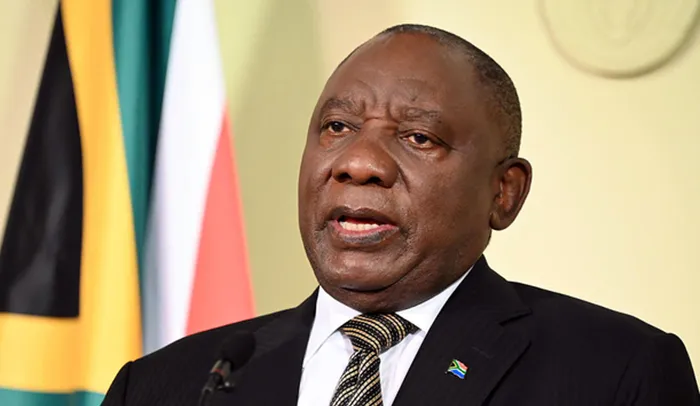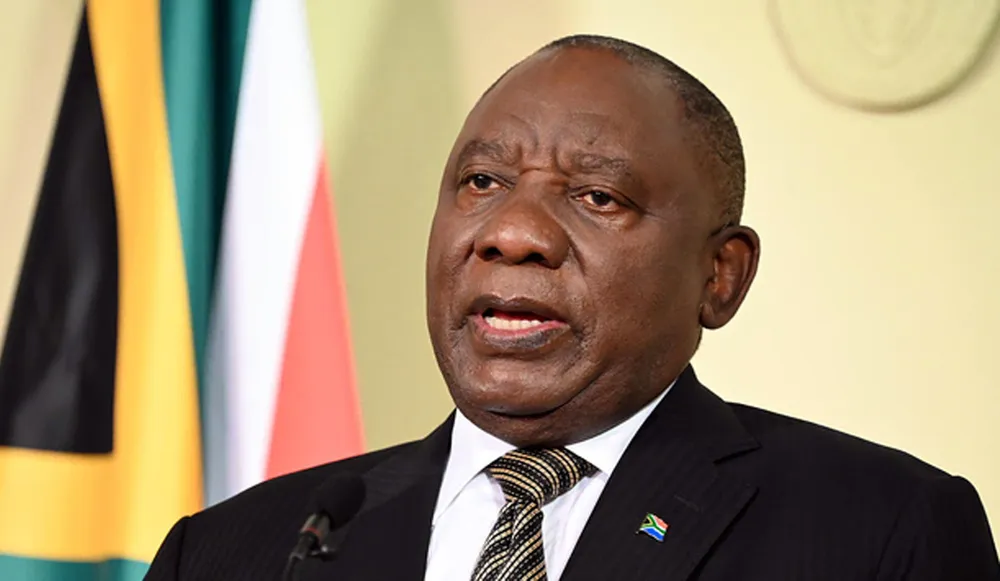Why a permanent R350 Social Relief of Distress Grant is not good for South Africa

Picture: ANA/Taken on July 25, 2021 – President Cyril Ramaphosa reinstates the Sassa R350 Social Relief of Distress grant for unemployed people.
Picture: Leon Lestrade/African News Agency (ANA)/Taken February 9, 2021 – People gather outside the Bishop Lavis Post Office in Cape Town, South Africa, for Social Relief of Distress grant of R350 per month. The more than R26 million spent monthly on this grant should be used to create jobs for people instead, the writer says.
By Katiso Buthelezi
The high rate of unemployment in South Africa has remained a major problem over the past two decades. Unemployment rose even more dramatically in 2020 due to the national Covid-19 lockdown.
According to the Quarterly Labour Survey (QLFS), the country’s unemployment rate stood at 34.5 percent in the first quarter of 2022.
In the early stages of the Covid-19 lockdown, President Cyril Ramaphosa instructed the South African Social Security Agency (SASSA) to introduce a R350 Social Relief of Distress Grant monthly to assist unemployed people.

GroundUp’s report on October 11, 2022 highlights that the social development minister, Lindiwe Zulu, stated that the R350 unemployment grant has increased the number of people who get financial assistance from the government by an additional 7.5 million.
The government continued to provide the R350 unemployment grant to the unemployed citizens even after the Covid-19 period because of the levels of unemployment that continued to rise in the country, and many people all around the country have even called for this unemployment grant to be made permanent.
TimesLIVE reported on January 6, 2023, that social development minister and national executive committee (NEC) member Lindiwe Zulu announced “the governing party was in full support of a permanent basic income grant for the jobless and that where the finance will come from should be left in the hands of the (NEC)”.
This shows that at the moment, the government does not have a clear plan for how they are going to raise more revenue to maintain the R350 unemployment grant if it is to be made permanent, which means the maintenance of the unemployment grant is another possible issue that the government might face in the near future.
The South African government has been heavily dependent on public borrowing to tackle many socio-economic issues in this country. For instance, in 2021-2022, the government’s total debt was about $130 billion (about R2.4 trillion). Therefore, borrowing money to finance the R350 unemployment grant will increase the country’s debt even more, especially given that the government is spending around R26 million every month to maintain this grant.
Making the unemployment grant permanent will not solve unemployment in South Africa; instead, it will add more challenges to the ones the government has in hand.
A January 26 TimesLIVE report shows that on his visit to Botshabelo in Mangaung, the ANC president Cyril Ramaphosa told the residents of Botshabelo that “South Africa was the only country on the African continent that gives out free money to its citizens at such a rate ... and therefore there is no other country in Africa that takes care of its people like South Africa does”.
My argument is that President Ramaphosa shouldn’t be boasting about giving the unemployed citizens R350 per month, which is not even enough to cover their basic needs because the poverty line in South Africa is around R50 per day, which means R350 is sufficient to survive only seven days in South Africa. The president should instead focus on coming up with ideas that will help create jobs for the millions of unemployed people in South Africa so that they can work and earn salaries that will enable them to meet their basic needs, especially given that the price of goods keeps on increasing rapidly in the country.
When he came into power in 2018, President Cyril Ramaphosa promised to grow the country’s economy at a faster rate than its population and create jobs for 2 million young people.
However, according to research conducted by Statistics South Africa in 2022, South Africa’s youth continue to face disadvantages in the job market, with higher unemployment rates than the country’s average.
According to the Quarterly Labour Force Survey (QLFS), the unemployment rate for people aged 15 to 24 was 63.9 percent, while the rate for people aged 25 to 34 was 42.1 percent during the first quarter of 2022.
This shows that President Ramaphosa still needs to keep his promise of creating jobs in South Africa because the unemployment level in the country keeps increasing.
The R26 million being spent monthly on the R350 SRD grant for millions of unemployed citizens in this country could be better spent on job creation initiatives such as building factories, developing industries, and so on.
If the government were to use all this money to create more jobs, it would result in a decrease in the levels of unemployment in this country. Making the R350 unemployment fund permanent, will only add to the many woes the government is currently facing.
Katiso Buthelezi is a master’s candidate at the department of sociology at the University of Johannesburg.